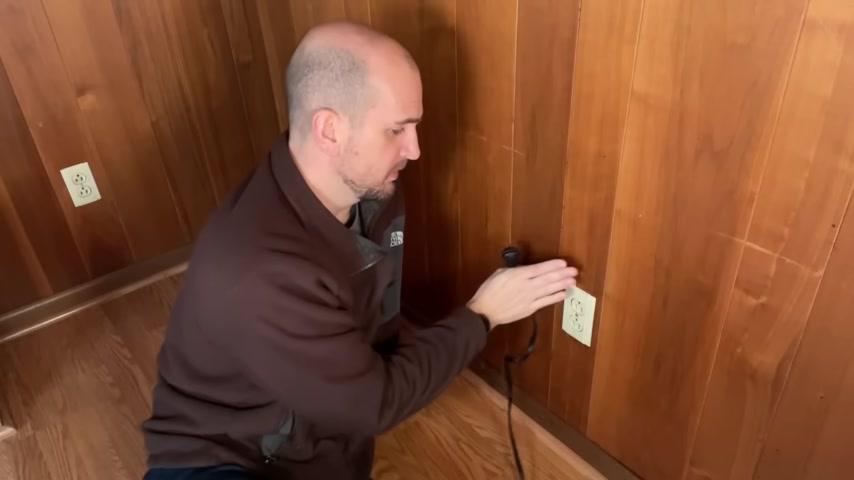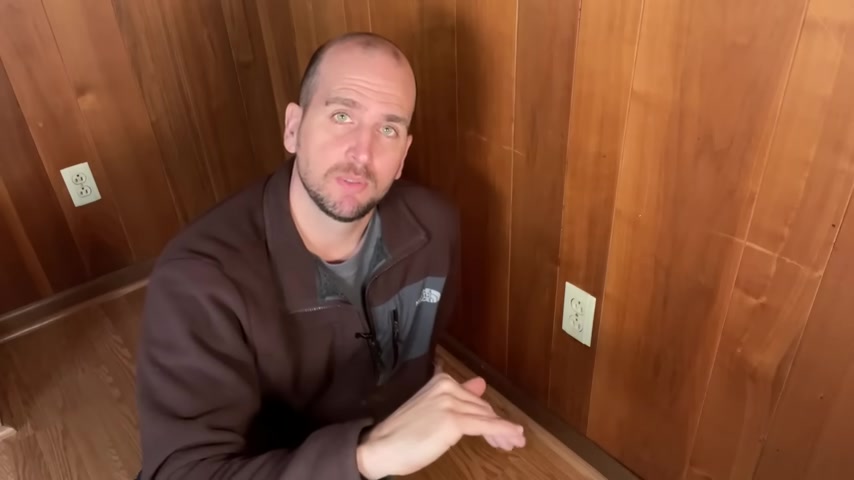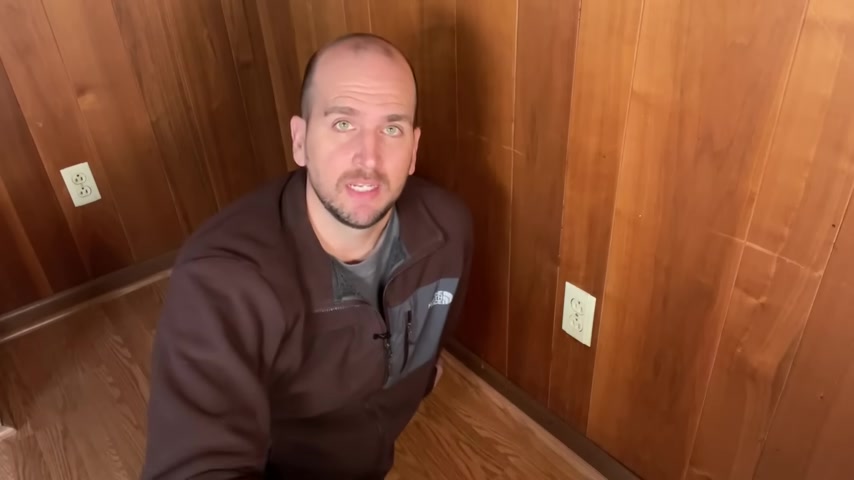https://www.youtube.com/watch?v=kYXvcog9MxY
Should An Outlet Be Installed Ground Down Or Up

How's it going ?
You guys , it's Scott with everyday home repairs and I'm just starting a new rehab project and I'm doing my to do list and getting my plan of attack .
And one thing that I'll be doing on this property is updating some of the electrical , including the receptacle .
You see behind me , these are just worn out there and sold decades ago .
So you know that they can get really loose and really not hold a plug .
Now that brought up a question that has been in the comments of many of the past videos that I've done where we are comparing different receptacles um in terms of residential grade or commercial grade and also , uh just showing you how to install a , a simple outlet or receptacle .
And that is , which way do you place the ground ?
Should it be facing up ?
Like the one behind me or actually in the same room ?
I have receptacle installed with the ground facing down .
So just this house alone has confusion , right ?
There's , there's multiple ways that people have installed them over the years .
So the question is , what's the correct way ?

Is there a code that outlines this does N E C outline this and also what other safety and design factors do you need to take into consideration to know what is the correct way to installed and stick around ?
Because one , I want your feedback , any comments that you guys have experience that you have is awesome to put that down in the comments .
I I really do appreciate that and then I want your vote .
So I'll show you a quick way to vote .
And then also to see all the people that came before you .
What is their vote ?
What percentage of people uh install ground up , what percentage of people install ground down ?
So let's jump into it first up , let's discuss code .
So national electrical code and I don't want you guys to be distracted .
You're probably jealous of the sweet wood paneling ahead behind me .

Also , this is gonna be on the project for the rehab but with the code and this has been some confusion in the past N E C does not , at least within 2021 does not currently call out the correct orientation for you might be on a job that has a spec or a call out for which way they want it installed .
Maybe it's at the hospital or another facility .
And they're saying ground up all receptacles will be ground up now , that's not called out by N E C that might be called out by the job .
So right now N E C does not give guidance .
And there was a , a good feed back from one of the past videos where a commenter indicated , one of the brands actually did put top , actually put the word top where you would read top in the correct orientation of ground was facing up .

The problem with that is then if somebody installed it with ground facing down on a residence because this is not called out by and they see they're having some issues getting it approved by the local inspector .
So it's causing confusion and then that brand eventually actually took that off .
So from a code perspective , this is not called out at least within 2021 .
Now , moving on to safety .
And I would say that this is probably the strongest argument for ground facing up .
So if you look at a standard plug and you were to plug it into a ground facing up and specifically in this outlet , it's very loose , right ?
The tension is very weak .
So a real scenario could be this plug backs out a little bit and exposes the proms .
Now , if you were to introduce something like a screwdriver , um another piece of metal , a picture frame and it was to drop in this scenario , it will hit the ground pin first opposed to hot and new , which would create a short , right .

So if you have ground facing down and you introduce something coming in , it's going to touch the hot , neutral , connect those two and create a short trick or breaker , create sparks and so on .
So this would probably be the best argument .
And the most common one I've seen in the comments is it's preferred to have that ground up because it could , something could hit that bounce off and not cause any issues .
A couple addition notes on ground facing up .
Now , if you look at the brand websites , Levitin , I think that's how you pronounce it .
I know people have corrected me in the past uh Eaton or some of the other receptacle makers you'll notice in their marketing material , the the shots right of the receptacles and the different uh models that they have , the ground is facing up .
So there's obviously some lean towards ground facing up from the brand perspective .
So that should be noted and taken seriously because they are the manufacturer .
But in terms of some different plugs that you might have , you might have a plug like this that takes a quick 90 right ?

And that's trying to reduce the amount of clearance that you need between the receptacle and let's say an entertainment center or a desk .
Sometimes you'll see these on search protectors or other types of extension cords .
Now , if you go ground facing up , you're obviously not getting the advantage of that quick 90 because the , the court is gonna have to double back down , need a little bit more clearance to get to the ground .
So that is one challenge , not a huge challenge but one challenge I see .
And then from that safety perspective , two prompt , two prong are the most common that aren't gonna hold because they don't have that ground pin to give another additional point of tension .
So two prong are gonna be more likely to pull out .
Now , in that case , the argument of something falling on the the prongs , it doesn't matter if you're ground up or ground down that is still gonna connect your hot and neutral .
So it kind of takes away from that safety perspective .

Now , I want your feedback and also the best way for you to learn isn't necessarily to listen to me , right ?
I'm ad I wire uh just kind of learning through this stuff .
I'm not AAA licensed electrician , but you can see the feedback of hundreds or thousands of people and see what the percentage is .
How many people do ground facing down , how many people do ground facing up .
So if you prefer ground , facing down the majority of time you install ground , facing down , hit the like button .
OK ?
Turn that like button blue .
Alternatively , if you prefer ground facing up , go ahead and hit the dislike button , the thumbs down .
Turn that one blue .
Then as you guys watch this video , one don't forget to vote and two , you can look at the percentage or look at the number of ups versus down .
It's in the verse of what you might think , but that's how we'll vote on this one and hopefully it doesn't completely blow up my like to dislike percentage .
Go ahead and vote .

Give me any other feedback that you have now from my standpoint , I do ground facing down .
That's something I'm used to .
Maybe it just comes from my area , that's the highest percentage of receptacles or ground facing down .
And I just , I don't see the huge safety benefit .
Like I said , I think two prong is where your biggest issue is and that's gonna be independent of ground facing up or down .
I do use ground facing up in specific instances where I have a switched receptacle where a light switch is controlling the power to a receptacle , at least on the top or bottom .
So in that case , I do put ground facing up and that's just to easily denote which receptacles are switched opposed to always power on .
Hopefully that cleared up in your mind .
There is no definitive way , but there are some pros and cons and different things to consider .
And before taking off , don't forget to subscribe to the channel .
We have weekly videos like this to help you go out around the house with your repairs and improvements and we'll catch you on the next one .
Take care .
Are you looking for a way to reach a wider audience and get more views on your videos?
Our innovative video to text transcribing service can help you do just that.
We provide accurate transcriptions of your videos along with visual content that will help you attract new viewers and keep them engaged. Plus, our data analytics and ad campaign tools can help you monetize your content and maximize your revenue.
Let's partner up and take your video content to the next level!
Contact us today to learn more.